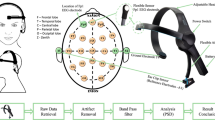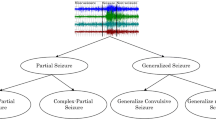Abstract
Two-stage lossless data compression methods involving predictors and encoders are well known. This paper discusses the application of context based error modeling techniques for neural network predictors used for the compression of EEG signals. Error modeling improves the performance of a compression algorithm by removing the statistical redundancy that exists among the error signals after the prediction stage. In this paper experiments are carried out by using human EEG signals recorded under various physiological conditions to evaluate the effect of context based error modeling in the EEG compression. It is found that the compression efficiency of the neural network based predictive techniques is significantly improved by using the error modeling schemes. It is shown that the bits per sample required for EEG compression with error modeling and entropy coding lie in the range of 2.92 to 6.62 which indicates a saving of 0.3 to 0.7 bits compared to the compression scheme without error modeling.













Similar content being viewed by others
References
Antoniol, G., and Tonella, P., EEG data compression techniques. IEEE Trans. Biomed. Eng. 44(2):105–114, 1997.
Magotra, N., Mandyam, G., Sun, M., and McCoy, J. W., Lossless compression of electroencephalographic data, ISCAS 96. Proc. IEEE 2:313–315, 1996.
Sriraam, N., Kannan, R., and Eswaran, C., Lossless compression of EEG data using neural network predictors, ICONNIP 2002. Proc. IEEE 4:2046–2048, 2002.
Sriraam, N., and Eswaran, C., Performance analysis of perceptron predictors for EEG signal compression, IEEE TENCON 2003. Proc. IEEE 4:1600–1603, 2003.
Sriraam, N., and Eswaran, C., EEG signal compression using optimally configured neural network predictors. IEE/IEEE Int. Conf. Med. Signal Inf. Process. 378–382, 2004.
Sriraam, N., and Eswaran, C., Performance evaluation of two-stage lossless compression of EEG signals. Int. J. Signal Process. 1(2):89–92, 2004.
Wu, X., Efficient and effective lossless compression of continuous-tone images via context selection and quantization. IEEE Trans. Image Process. 6:656–664, 1996.
Wu, X., and Memon, N. D., Context-based adaptive lossless image coding. IEEE Trans. Commun. 45(4):437–444, 1997.
Wu, X., Lossless compression of continuous-tone images via context selection, quantization, and modeling. IEEE Trans. Image Process. 6(5):656–664, 1997.
Memon, N. N., Kong, X., Cinkler, J., Context-based lossless and near-lossless compression of EEG signals. IEEE Trans. Inf. Technol. Biomed. 3(3):231–238, 1999.
Kong, X., Goel, V., and Thakor, N., Quantification of injury-related EEG signal changes using Itakura distance measure. Int. Conf. Acoust. Speech Signal Process. 2947–2950, 1995.
Dony, D., and Haykin, S., Neural network approaches to image compression. Proc. IEEE 83(2):288–303, 1995.
Howard, P., and Vitter, J. S., Error modeling for hierarchical lossless image compression. Data Compression Conf. Proc. IEEE 269–278, 1992.
Biopac Owners Guide, 2001.
Andrzejak, R. G., Lehnertz, K., Mormann, F., Rieke, F. C., David, P., and Elger, C. E., Indications of nonlinear deterministic and finite-dimensional structures in time series of brain electrical activity: Dependence on recording region and brain state. Phys. Rev. E 64:1–8, 2001.
Krkic, M., Roberts, S. J., Rezek, I. A., and Jordan, C., EEG based assessment of anesthetic-depth using neural network. Proc. Inst. Elect Eng. AI Methods Biosignal Anal. 10:991–996, 1996.
Gersho, A., and Gray, R. M., Vector Quantization and Signal Compression. Kluwer, Norwell, MA, 1992.
Logeswaran, R., and Eswaran, C., Neural network based lossless coding schemes for telemetry data. Proc. IEEE Int. Conf. Geosci. Remote Sensing 4:2057–2059, 1999.
Acknowledgements
This research work has been partly funded by the Ministry of Science, Technology and Environment (MOSTE), Malaysia (IRPA Project number: 04-99-01-0052-EA04815).
Author information
Authors and Affiliations
Corresponding author
Rights and permissions
About this article
Cite this article
Sriraam, N., Eswaran, C. Context Based Error Modeling for Lossless Compression of EEG Signals Using Neural Networks. J Med Syst 30, 439–448 (2006). https://doi.org/10.1007/s10916-006-9025-0
Published:
Issue Date:
DOI: https://doi.org/10.1007/s10916-006-9025-0




